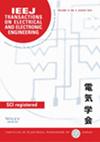求助PDF
{"title":"考虑点击行为偏好的交互式皮肤病变分割","authors":"Shuofeng Zhao, Chunzhi Gu, Jun Yu, Takuya Akashi, Chao Zhang","doi":"10.1002/tee.24172","DOIUrl":null,"url":null,"abstract":"<p>Interactive Medical Image Segmentation (IMIS) aims to improve the accuracy of image segmentation by incorporating human guidance, primarily through click-based interactions. IMIS for skin lesion segmentation is a challenging task because the edges of lesion regions on the skin are often ambiguous, and training IMIS models requires the generation of pseudo-clicks to simulate human clicks. Most previous methods generate pseudo-clicks by sampling from the entire mis-segmented region. However, such clicks are inconsistent with human behavior, resulting in performance degradation, particularly for skin lesion segmentation. In this study, we address this issue by integrating human preference into the process of generating pseudo clicks to train the segmentation model, which is simple yet effective. Specifically, through a user study, we find that people are more inclined to click on larger mis-segmented regions during interactive segmentation. Inspired by this, a roulette selection strategy is used to generate the pseudo-clicks based on the area of the mis-segmented subregions. Our proposed method, <span>BehaviorClick</span>, can be easily integrated with existing interactive segmentation models to improve the performance. The accuracy improvement on four dermoscopic datasets under six state-of-the-art interactive segmentation methods is confirmed, which demonstrates the generalizability and effectiveness of our approach. © 2024 Institute of Electrical Engineers of Japan and Wiley Periodicals LLC.</p>","PeriodicalId":13435,"journal":{"name":"IEEJ Transactions on Electrical and Electronic Engineering","volume":"20 1","pages":"89-100"},"PeriodicalIF":1.0000,"publicationDate":"2024-07-22","publicationTypes":"Journal Article","fieldsOfStudy":null,"isOpenAccess":false,"openAccessPdf":"","citationCount":"0","resultStr":"{\"title\":\"Interactive Skin Lesion Segmentation Considering Behavioral Preference in Clicking\",\"authors\":\"Shuofeng Zhao, Chunzhi Gu, Jun Yu, Takuya Akashi, Chao Zhang\",\"doi\":\"10.1002/tee.24172\",\"DOIUrl\":null,\"url\":null,\"abstract\":\"<p>Interactive Medical Image Segmentation (IMIS) aims to improve the accuracy of image segmentation by incorporating human guidance, primarily through click-based interactions. IMIS for skin lesion segmentation is a challenging task because the edges of lesion regions on the skin are often ambiguous, and training IMIS models requires the generation of pseudo-clicks to simulate human clicks. Most previous methods generate pseudo-clicks by sampling from the entire mis-segmented region. However, such clicks are inconsistent with human behavior, resulting in performance degradation, particularly for skin lesion segmentation. In this study, we address this issue by integrating human preference into the process of generating pseudo clicks to train the segmentation model, which is simple yet effective. Specifically, through a user study, we find that people are more inclined to click on larger mis-segmented regions during interactive segmentation. Inspired by this, a roulette selection strategy is used to generate the pseudo-clicks based on the area of the mis-segmented subregions. Our proposed method, <span>BehaviorClick</span>, can be easily integrated with existing interactive segmentation models to improve the performance. The accuracy improvement on four dermoscopic datasets under six state-of-the-art interactive segmentation methods is confirmed, which demonstrates the generalizability and effectiveness of our approach. © 2024 Institute of Electrical Engineers of Japan and Wiley Periodicals LLC.</p>\",\"PeriodicalId\":13435,\"journal\":{\"name\":\"IEEJ Transactions on Electrical and Electronic Engineering\",\"volume\":\"20 1\",\"pages\":\"89-100\"},\"PeriodicalIF\":1.0000,\"publicationDate\":\"2024-07-22\",\"publicationTypes\":\"Journal Article\",\"fieldsOfStudy\":null,\"isOpenAccess\":false,\"openAccessPdf\":\"\",\"citationCount\":\"0\",\"resultStr\":null,\"platform\":\"Semanticscholar\",\"paperid\":null,\"PeriodicalName\":\"IEEJ Transactions on Electrical and Electronic Engineering\",\"FirstCategoryId\":\"5\",\"ListUrlMain\":\"https://onlinelibrary.wiley.com/doi/10.1002/tee.24172\",\"RegionNum\":4,\"RegionCategory\":\"工程技术\",\"ArticlePicture\":[],\"TitleCN\":null,\"AbstractTextCN\":null,\"PMCID\":null,\"EPubDate\":\"\",\"PubModel\":\"\",\"JCR\":\"Q4\",\"JCRName\":\"ENGINEERING, ELECTRICAL & ELECTRONIC\",\"Score\":null,\"Total\":0}","platform":"Semanticscholar","paperid":null,"PeriodicalName":"IEEJ Transactions on Electrical and Electronic Engineering","FirstCategoryId":"5","ListUrlMain":"https://onlinelibrary.wiley.com/doi/10.1002/tee.24172","RegionNum":4,"RegionCategory":"工程技术","ArticlePicture":[],"TitleCN":null,"AbstractTextCN":null,"PMCID":null,"EPubDate":"","PubModel":"","JCR":"Q4","JCRName":"ENGINEERING, ELECTRICAL & ELECTRONIC","Score":null,"Total":0}
引用次数: 0
引用
批量引用

 求助内容:
求助内容: 应助结果提醒方式:
应助结果提醒方式:


